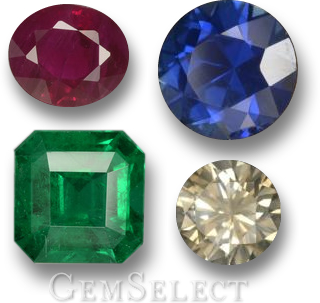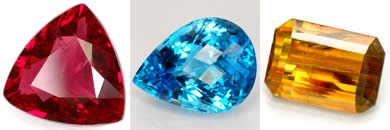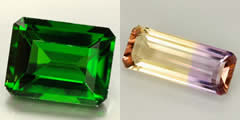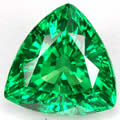Semi-Precious Gemstones

The "Precious Four" Gems
Semi precious gemstones is a term historically used in the gem and jewelry industry to classify gemstones that are not considered precious (diamond, ruby, sapphire and emerald). The distinction between precious and semi precious stones was largely based on rarity, value, and historical perception rather than intrinsic qualities. The terms precious and semi precious gems are actually no longer used in the gem trade. Feel free to explore our wide range of semi precious gemstones for sale.
This rejection of the term semi precious gems is a way of recognizing the incredible diversity and rarity of many colored gemstones. One of the major changes in today's gem market is a growing consumer awareness of the vast range of colored stones. These days customers ask us about sphene and iolite and other previously obscure gem varieties just as often as they ask us about sapphire or emerald.
 So the world of colored gemstones needs some new classifications to replace the outdated distinction between precious and semi precious gems. None of the trade organizations have proposed a new schema. Yet, one is definitely necessary, since we need a way to explain to buyers why some gems are highly valued and others are not.
So the world of colored gemstones needs some new classifications to replace the outdated distinction between precious and semi precious gems. None of the trade organizations have proposed a new schema. Yet, one is definitely necessary, since we need a way to explain to buyers why some gems are highly valued and others are not.
At the very least we need a classification for what we might call premium colored gems. These are gems that have excellent gemstone characteristics - hardness, durability, brilliance, clarity and color. In most cases they are also quite rare. These could be considered to be the new precious gems. This group would include not only ruby, sapphire and emerald, but also spinel, tanzanite, tsavorite garnet, demantoid garnet, alexandrite and the finer tourmaline.
 Another useful categorization is grouping gems that have good gemstone characteristics, but are widely available and very affordable. These include members of the quartz group - amethyst, citrine, ametrine, rose quartz, etc. - as well as topaz and the more common garnets. All of these stones have very good hardness (between 7 and 8 on the Mohs scale) and most have very good clarity. However, they are typically priced at well under $10 per carat.
Another useful categorization is grouping gems that have good gemstone characteristics, but are widely available and very affordable. These include members of the quartz group - amethyst, citrine, ametrine, rose quartz, etc. - as well as topaz and the more common garnets. All of these stones have very good hardness (between 7 and 8 on the Mohs scale) and most have very good clarity. However, they are typically priced at well under $10 per carat.
 This still leaves forty or more varieties of fascinating gems to explore. Gemologists have useful ways to categorize them, but the market has a hard time classifying them, except by the term "colored stones". These gems include andalusite, diopside, fluorite, sphene, kyanite and moonstone. Each has its own unique colors and gemological characteristics. As they become better known, connoisseurs seek out the finest examples of each variety, so that the very best peridot and rarest rhodolite specimens become premium gemstones. This still leaves forty or more varieties of fascinating gems to explore. Gemologists have useful ways to categorize them, but the market has a hard time classifying them, except by the term "colored stones". These gems include andalusite, diopside, fluorite, sphene, kyanite and moonstone. Each has its own unique colors and gemological characteristics. As they become better known, connoisseurs seek out the finest examples of each variety, so that the very best peridot and rarest rhodolite specimens become premium gemstones.
|
